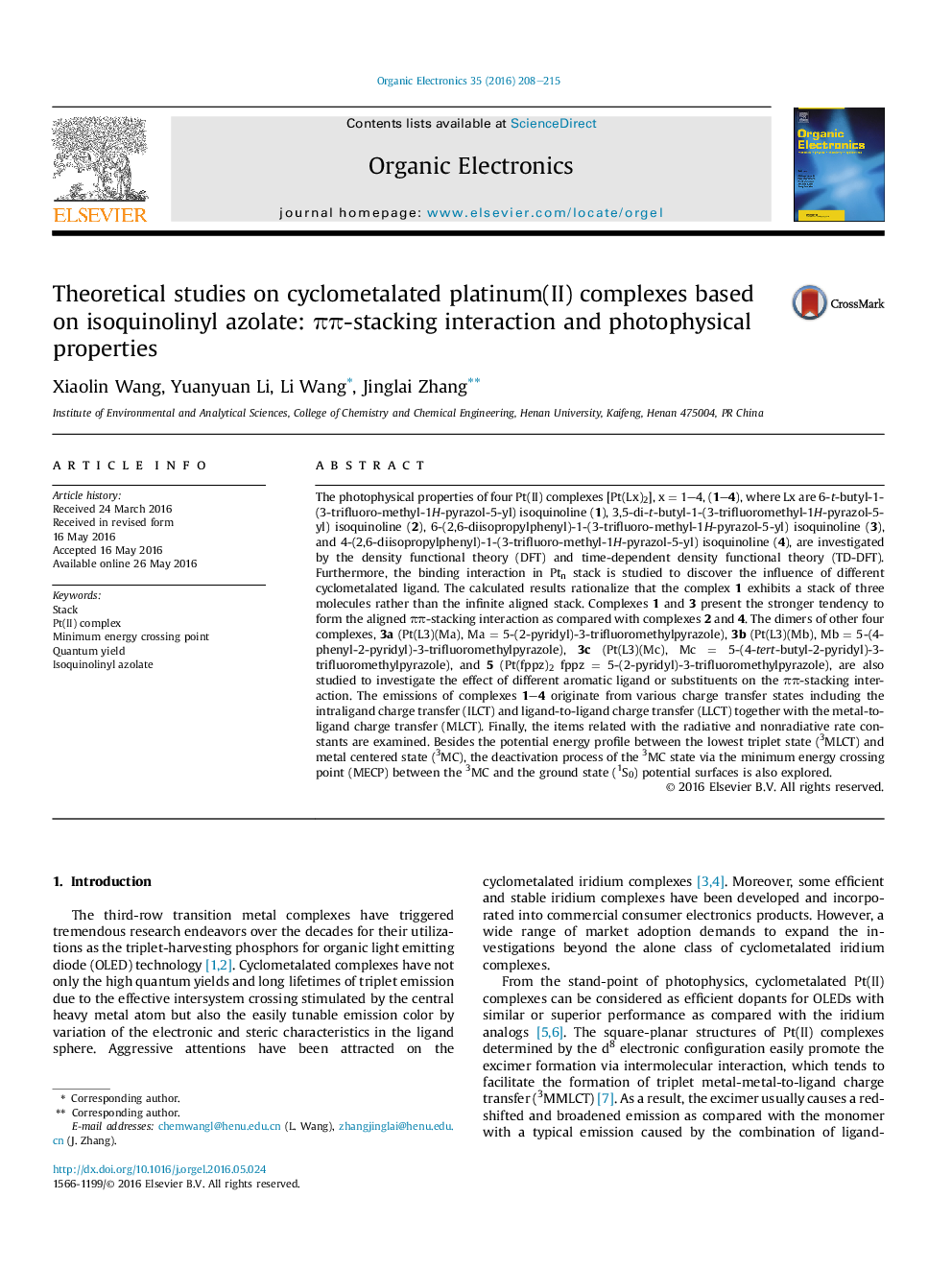| Article ID | Journal | Published Year | Pages | File Type |
|---|---|---|---|---|
| 1266822 | Organic Electronics | 2016 | 8 Pages |
•Influence of different cyclometalated ligands on the binding interaction.•Comparison of the ππ-stacking between different aromatic ligands.•The effect of different coordinated ligands on the quantum yield is explored.
The photophysical properties of four Pt(II) complexes [Pt(Lx)2], x = 1–4, (1–4), where Lx are 6-t-butyl-1-(3-trifluoro-methyl-1H-pyrazol-5-yl) isoquinoline (1), 3,5-di-t-butyl-1-(3-trifluoromethyl-1H-pyrazol-5-yl) isoquinoline (2), 6-(2,6-diisopropylphenyl)-1-(3-trifluoro-methyl-1H-pyrazol-5-yl) isoquinoline (3), and 4-(2,6-diisopropylphenyl)-1-(3-trifluoro-methyl-1H-pyrazol-5-yl) isoquinoline (4), are investigated by the density functional theory (DFT) and time-dependent density functional theory (TD-DFT). Furthermore, the binding interaction in Ptn stack is studied to discover the influence of different cyclometalated ligand. The calculated results rationalize that the complex 1 exhibits a stack of three molecules rather than the infinite aligned stack. Complexes 1 and 3 present the stronger tendency to form the aligned ππ-stacking interaction as compared with complexes 2 and 4. The dimers of other four complexes, 3a (Pt(L3)(Ma), Ma = 5-(2-pyridyl)-3-trifluoromethylpyrazole), 3b (Pt(L3)(Mb), Mb = 5-(4-phenyl-2-pyridyl)-3-trifluoromethylpyrazole), 3c (Pt(L3)(Mc), Mc = 5-(4-tert-butyl-2-pyridyl)-3-trifluoromethylpyrazole), and 5 (Pt(fppz)2 fppz = 5-(2-pyridyl)-3-trifluoromethylpyrazole), are also studied to investigate the effect of different aromatic ligand or substituents on the ππ-stacking interaction. The emissions of complexes 1–4 originate from various charge transfer states including the intraligand charge transfer (ILCT) and ligand-to-ligand charge transfer (LLCT) together with the metal-to-ligand charge transfer (MLCT). Finally, the items related with the radiative and nonradiative rate constants are examined. Besides the potential energy profile between the lowest triplet state (3MLCT) and metal centered state (3MC), the deactivation process of the 3MC state via the minimum energy crossing point (MECP) between the 3MC and the ground state (1S0) potential surfaces is also explored.
Graphical abstractFigure optionsDownload full-size imageDownload as PowerPoint slide
